
The pipa is a four-stringed Chinese musical instrument, belonging to the plucked category of instruments. Sometimes called the Chinese lute, the instrument has a pear-shaped wooden body with a varying number of frets ranging from 12 to 26. Another Chinese four-string plucked lute is the liuqin, which looks like a smaller version of the pipa. The pear-shaped instrument may have existed in China as early as the Han dynasty, and although historically the term pipa was once used to refer to a variety of plucked chordophones, its usage since the Song dynasty refers exclusively to the pear-shaped instrument.
The erhu, is a two-stringed bowed musical instrument, more specifically a spike fiddle, which may also be called a Southern Fiddle, and sometimes known in the Western world as the Chinese violin or a Chinese two-stringed fiddle.
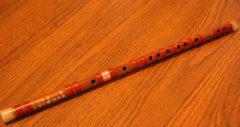
The dizi, is a Chinese transverse flute. It is also sometimes known as the di (笛) or héngdi (橫笛), and has varieties including the qǔdi (曲笛) and bāngdi (梆笛). It is a major Chinese musical instrument that is widely used in many genres of Chinese folk music, Chinese opera, as well as the modern Chinese orchestra. The dizi is also a popular instrument among the Chinese people as it is simple to make and easy to carry.
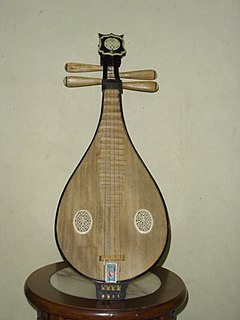
The liuqin is a four-stringed Chinese mandolin with a pear-shaped body. It is small in size, almost a miniature copy of another Chinese plucked musical instrument, the pipa. The range of its voice is much higher than the pipa, and it has its own special place in Chinese music, whether in orchestral music or in solo pieces. This has been the result of a modernization in its usage in recent years, leading to a gradual elevation in status of the liuqin from an accompaniment instrument in folk Chinese opera, to an instrument well-appreciated for its unique tonal and acoustic qualities. The position of the instrument is lower than the pipa, being held diagonally like the Chinese ruan and yueqin. Like the ruan and unlike the pipa its strings are elevated by a bridge and the soundboard has two prominent soundholes. Finally, the instrument is played with a pick with similar technique to both ruan and yueqin, whereas the pipa is played with the fingers. Therefore, the liuqin is most commonly played and doubled by those with ruan and yueqin experience.

The Central Conservatory of Music is a prestigious leading music school of China. Its campus is in the Xicheng District of Beijing, China, near Fuxingmen Station. It is a Chinese Ministry of Education Double First Class Discipline University, with double First Class status in certain disciplines.
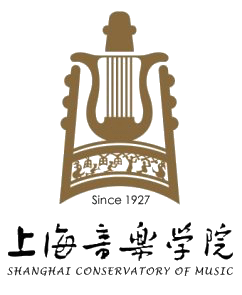
The Shanghai Conservatory of Music was founded on November 27, 1927 as the first music institution of higher education in China. Its teachers and students have won awards at home and abroad, thus earning the conservatory the name "the cradle of musicians."

The term Chinese orchestra is most commonly used to refer to the modern Chinese orchestra that is found in China and various overseas Chinese communities. This modern Chinese orchestra first developed out of Jiangnan sizhu ensemble in the 1920s into a form that is based on the structure and principles of a Western symphony orchestra but using Chinese instruments. The orchestra is divided into four sections - wind, plucked strings, bow strings, and percussion, and usually performs modernized traditional music called guoyue. The orchestra may be referred to as Minzu Yuetuan or Minzu Yuedui in mainland China, Chung Ngok Tuen in Hong Kong, Huayuetuan in Southeast Asia, or Guoyuetuan in Taiwan, all meaning Chinese orchestra.

The gaohu is a Chinese bowed string instrument developed from the erhu in the 1920s by the musician and composer Lü Wencheng (1898–1981) and used in Cantonese music and Cantonese opera. It belongs to the huqin family of instruments, together with the zhonghu, erhu, banhu, jinghu, and sihu; its name means "high-pitched huqin". It is the leading instrument of Cantonese music and opera ensembles. Well known pieces for the gaohu include Bu Bu Gao and Ping Hu Qiu Yue.
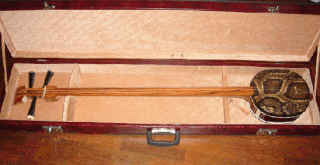
The sanxian is a Chinese lute—a three-stringed fretless plucked musical instrument. It has a long fingerboard, and the body is traditionally made from snake skin stretched over a rounded rectangular resonator. It is made in several sizes for different purposes and in the late 20th century a four-stringed version was also developed. The northern sanxian is generally larger, at about 122 cm (48 in) in length, while southern versions of the instrument are usually about 95 cm (37 in) in length.
Tay Teow Kiat is the Music Director of East Zone Schools’ Chinese Orchestra Development Centre, President of Singapore Chinese Instrumental Music Association, Music Director of Nanyang Academy of Fine Arts (NAFA) City Chinese Orchestra (CCO), Music Director of Dingyi Chamber Ensemble and Resident Conductor of Dunman High School Chinese Orchestra (DHSCO).
Liu Qichao is a Chinese-born American musician. He graduated from the Shanghai Conservatory of Music. He now lives in Los Angeles.
Chen Yi is a Chinese violinist and composer of contemporary classical music. She was the first Chinese woman to receive a Master of Arts (M.A.) in music composition from the Central Conservatory of Music in Beijing. Chen was a finalist for the 2006 Pulitzer Prize for Music for her composition Si Ji, and has received awards from the Koussevistky Music Foundation and American Academy of Arts and Letters, as well as fellowships from the Guggenheim Foundation and the National Endowment for the Arts. In 2010, she was awarded an Honorary Doctorate from The New School and in 2012, she was awarded the Brock Commission from the American Choral Directors Association. She was elected to the American Academy of Arts and Letters in 2019.
Bright Sheng is a Chinese-American composer, pianist, music teacher and conductor born on December 6, 1955 in Shanghai, China. Before moving to the United States in 1982, he studied the piano at the age of four from his mother. He graduated from the Shanghai Conservatory and went on to continue his education at Queens College and Columbia University. In 1995, he became a part of the faculty at the University of Michigan. Sheng has since then earned many honors for his music and compositions.
The erxian is a Chinese bowed string instrument in the huqin family of instruments. It has two strings and is used primarily in Cantonese music, most often in "hard string" chamber ensembles. In the 1920s, following the development of the gaohu, the erxian experienced a decline and since the late 20th century has been little used outside the tradition of Cantonese opera.
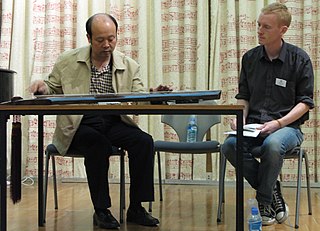
Zeng Chengwei (曾成偉) is a Chinese musician of the guqin, born in the Sichuan province of China. He is a fifth-generation transmitter of the Shu school of qin music, having studied with his maternal grandfather, Yu Shaoze. Zeng is also a well-known maker of the instrument.

The Lithuanian Academy of Music and Theatre in Vilnius, Lithuania, is a state-supported conservatory that trains students in music, theatre, and multimedia arts.
Jiangnan sizhu is a style of traditional Chinese instrumental music from the Jiangnan region of China.
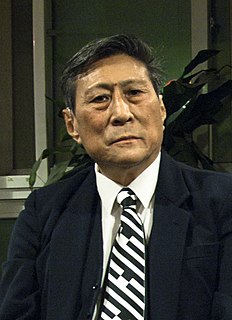
Wang Xilin is a Chinese composer.
Zou Hang is a Chinese Composer born in Hunan province. He studied traditional music at an early age from his father, Professor Zou Shuliang. He began to study composition in 1990, and was admitted to the Central Conservatory of Music, where he studied under the composer Ye Xiaogang. In 2001, he obtained his master's degree and became a faculty member of the conservatory.

Feifei Yang is an award-winning musician, singer, instructor, and an arts entrepreneur. Hailed as "The Chinese Huqin Girl Stepping into Hollywood" by SinoVision, she is an Erhu and Banhu performance expert and vocalist whose talents are revolutionizing the global music and entertainment scenes. Indie Nation noted she is "an extremely talented pop star in the making. Her potential is truly endless." Skope Magazine highly recognized Feifei as an extraordinary artist who has "endless musical talents. Feifei is one who you will never know what to expect next." Feifei's contribution to Chinese music was commended by Agence France-Presse as "testing the possibilities of fusion by bringing jazz and other Western forms to performances on traditional instruments.”












